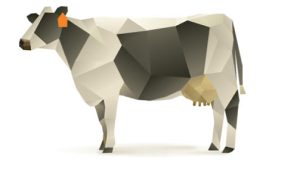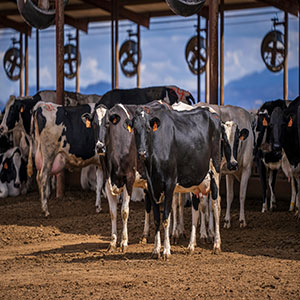Amino Acid Requirements, Ratios, and Essential Amino Acids in Dairy Cattle
Abstract
The need for essential amino acids in dairy cows, Amino acids play a crucial role in dairy cattle nutrition, influencing growth, milk production, reproduction, and overall health. The shift from crude protein-based nutrition to metabolizable protein (MP) and amino acid balancing has improved feed efficiency and nitrogen utilization. This paper reviews the essential amino acids (EAAs) required by dairy cattle, optimal amino acid ratios, and sources of amino acids in dairy diets. Particular emphasis is placed on lysine and methionine, the two most limiting amino acids in dairy rations. The implications of amino acid balancing on milk yield, milk composition, rumen health, and nitrogen excretion are also discussed.
Introduction
Dairy cattle require protein for maintenance, growth, reproduction, and lactation. However, feeding excess crude protein (CP) is inefficient and leads to nitrogen excretion, contributing to environmental pollution. Modern dairy nutrition focuses on metabolizable protein (MP) and the balance of essential amino acids (EAAs) rather than total protein intake. The supply of specific amino acids—particularly lysine (Lys) and methionine (Met)—directly affects milk protein synthesis, animal performance, and nitrogen utilization efficiency.
This paper explores the amino acid requirements of dairy cattle, the ideal amino acid ratios in MP, and the impact of amino acid balancing on milk production and sustainability.
Essential Amino Acids for Dairy Cattle
Dairy cattle require 10 essential amino acids (EAAs) that cannot be synthesized in sufficient quantities:
- Lysine (Lys) – Crucial for milk protein synthesis
- Methionine (Met) – Important for milk protein and immune function
- Histidine (His) – Needed for optimal milk production
- Leucine (Leu) – Supports muscle and milk protein synthesis
- Isoleucine (Ile) – Maintains energy balance and protein synthesis
- Valine (Val) – Important for nitrogen metabolism and immune response
- Phenylalanine (Phe) – Precursor for tyrosine, essential for protein synthesis
- Threonine (Thr) – Supports gut health and immune function
- Tryptophan (Trp) – Influences feed intake and serotonin production
- Arginine (Arg) – Important for reproduction and nitric oxide synthesis
Among these, lysine and methionine are the first two limiting amino acids in most dairy diets. If these are deficient, protein synthesis and milk production are constrained, even if other nutrients are adequate.

Amino Acid Requirements and Ideal Ratios
To maximize milk production and efficiency, amino acids must be supplied in optimal proportions within the metabolizable protein (MP).
Metabolizable Protein and Amino Acid Balance
Metabolizable protein consists of:
- Rumen Microbial Protein – Synthesized in the rumen from fermentable carbohydrates and ammonia.
- Rumen-Undegradable Protein (RUP) – Dietary protein that escapes rumen degradation and is digested in the small intestine.
The amino acid composition of MP should match the requirements of milk production, maintenance, and growth.
Optimal Amino Acid Ratios in MP
Studies suggest the following ideal amino acid composition in MP for high-producing dairy cows:
- Lysine: 7.2% of MP
- Methionine: 2.4% of MP
- Lysine to Methionine Ratio: ~2.8:1
This balance improves milk protein synthesis, nitrogen efficiency, and overall cow performance.
Amino Acid Sources in Dairy Diets
Rumen Microbial Protein
Rumen microbes synthesize high-quality microbial protein, providing 50-70% of the amino acids needed by the cow. Maximizing microbial protein synthesis is crucial for amino acid supply.
Rumen-Protected Amino Acids (RPAA)
Supplementing with rumen-protected lysine and methionine ensures these key amino acids reach the small intestine without rumen degradation.
Protein Sources in Dairy Diets
- Soybean meal – High in lysine but low in methionine.
- Canola meal – Good amino acid balance but lower in lysine than soybean meal.
- fish meal – Rich in lysine and methionine but expensive.
Impact of Amino Acid Balancing on Dairy Cattle Performance
Milk Yield and Composition
Balanced amino acid nutrition improves:
- Milk protein yield and content
- Fat yield (through methionine’s role in lipid metabolism)
- Overall feed efficiency
Nitrogen Utilization and Environmental Impact
Excess protein in dairy diets leads to high nitrogen excretion in urine and manure, contributing to environmental pollution. Proper amino acid balancing reduces nitrogen loss by improving nitrogen efficiency.
Reproduction and Immune Function
- Methionine enhances immune function and antioxidant status.
- Lysine supports embryo development and fertility.
(The need for essential amino acids in dairy cows)
Conclusion
Amino acid nutrition is critical for optimizing milk production, efficiency, and sustainability in dairy cattle. A balanced approach—focusing on metabolizable protein and essential amino acid ratios—improves milk yield, cow health, and nitrogen efficiency, reducing environmental impact. Future research should explore precision feeding, rumen microbial modulation, and genetic selection to further enhance amino acid utilization in dairy cattle.
Useful content:
Glucose Precursors in Transition Dairy Cows
slow release urea for ruminant


